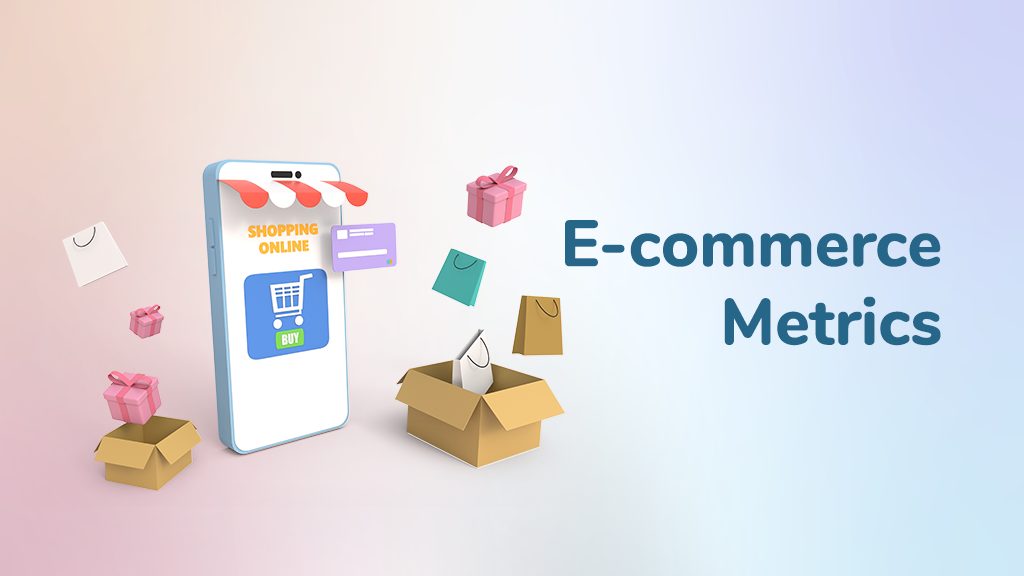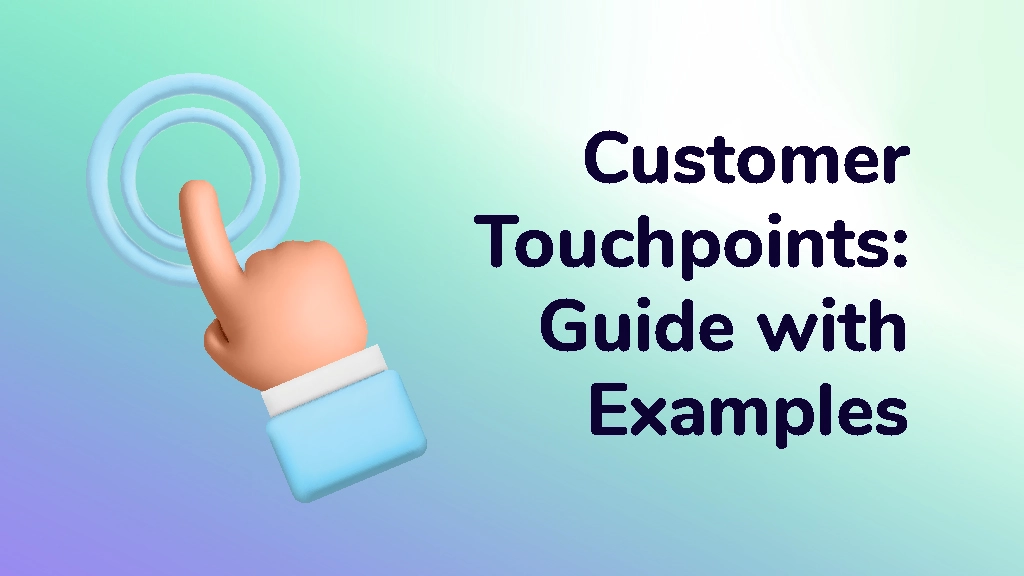22 Important E-commerce Metrics & KPIs You Must Track

- What Are E-commerce Metrics?
- E-commerce Metrics by Marketing Phase
- E-commerce Metrics by Customer Service
In this article, we’ll tell you about the key e-commerce metrics and KPIs you need to know. At the same time, we will touch on the importance of these concepts for e-commerce businesses. You can also benefit from this article while optimizing the advertising campaigns you give to your business or brand.
Not only will you learn how to use these metrics. We’ll also help you identify the top and most important e-commerce metrics for measuring your ads.
What Are E-commerce Metrics?
First of all, what needs to be understood is what the key metrics for e-commerce marketing are. A large part of ensuring success online as an eCommerce business is tracking, measuring, and reporting metrics. In other words, how are you supposed to know whether or not you’re growing, failing, moving in the right direction, or moving in the wrong direction?!
Because of how digital marketing efforts operate, the majority of what you implement is easily measurable. As such, it’s imperative not to ignore and instead pay attention to the e-commerce performance metrics available to you and your business. The metrics used for e-commerce are grouped under five main headings:
- Sales Phase
- Marketing Phase
- Customer Service
- Producing Phase
- Project Management Phase
Any metric to be used is a subheading of one of these headings. We’ll address sales, marketing, and customer service from these topics and help you find the important KPIs and metrics for e-commerce that are right for you. So let’s take a look at what those metrics are.
E-commerce Metrics by Sales Phase

Wouldn’t you want to know everything you can about your business, good or bad, so that you can adjust where necessary and celebrate when appropriate?
Luckily, there are notable e-commerce metrics or key performance indicators (e-commerce KPI) to track and in this article, we discuss them! So, if you’re an eCommerce business looking for ways to track, measure, and report on your successes and failures to ensure growth in the future, this article is for you!
Below are the most important e-commerce metrics to track as an online business or brand.
1. Sales Conversion Rate

The importance of e-commerce conversion metrics is that they show how many people who visit your website make a purchase. In short, it shows you whether or not the total website traffic you’re getting is qualified leads.
If you’re getting traffic but they’re not converting, there are likely things that need to be adjusted on your end, whether it be content quality, website load-time, website flow, or product quality, among other factors.
2. Average Order Value (AOV)

AOV from e-commerce metrics and KPIs is calculated by dividing total revenue by the number of orders you’ve received during a given timeframe.
This metric might seem quite obvious, hence, why it’s worth mentioning. At the end of the day, the primary intention of a business is to profit. The easiest way to do that? By increasing the total number of sales and/or the average order value of the customer.
The reason for tracking this metric isn’t only for your knowledge but to allow you to set new benchmarks and gain an understanding of how you can potentially increase the average order value.
3. Shopping Cart Abandonment Rate

The cart abandonment rate shows how many users added items to their shopping cart but didn’t pay. The lower this number, the better. If your cart abandonment rate is high, there may be a lot of friction in the checkout process.
4. Competitive Pricing
What this e-commerce metrics refers to is your place in the market. Looking at this, knowing where to place in your competitors’ price range is an important criterion.
5. Revenue Per Visitor (RPV)

This metric, which allows you to see how your online sales are doing, refers to the rate at which site users spend time on your website.
6. Customer Lifetime Value (CLV)

What this e-commerce metrics means for your business is loyalty. It refers to a customer’s lifelong relationship with your brand, their point of view, and their place in life. It’s important to review this metric to learn your overall brand impression.
7. Customer Churn Rate
This is where your customers unsubscribe from your website, unsubscribe from email, and message, move away from your brand, and no longer engage. An increase in this rate after your advertising campaigns may indicate significant expression problems within the campaign.
8. Customer Acquisition Costs (CAC)

It is the metric that calculates your per capita expenditure while acquiring each customer, taking into account all the money you allocate to marketing. The importance of these e-commerce metrics and KPIs is important for adjusting your advertising budgets.
9. Cost of Goods Sold (COGS)

It’s a metric that includes the production process and the people who work on your team, as well as salary payments. It serves to calculate the cost of delivering each product you sell to the customer.
Read more: Key Facebook Ads Metrics for Tracking
E-commerce Metrics by Marketing Phase

KPIs provide your business with the e-commerce funnel metrics required to take actionable steps toward your goals. To use another metaphor, it’s like a compass for your business, telling you whether or not you’re going in the right direction. These metrics, which you need to optimize your ad campaigns after they run, are the foundation of digital marketing.
10. Bounce Rate

This criterion is the key to clear information about the attractiveness of your website. Because you don’t want the time it takes for users to leave your website to be small. It will be important that you improve this ratio, which will fundamentally prevent you from selling.
11. Average Session Duration
It refers to the amount of time your users spend on your site, and if this time is not below your target, it can be a serious source of information for your ads.
12. Return On Advertising Spend (ROAS)
This metric, which is one of the important headings of the e-commerce dashboard; calculates every expense incurred for your advertising campaigns, including expenses incurred during the sales process, including the expenses of everyone involved in the project. ROAS is the ratio of your earnings to all of these expenses.
13. Return On Investment (ROI)
It simply refers to the ratio of what you spend on your advertising campaign to your earnings.
14. Cost-per-click (CPC)

Every time potential customers click on your ad campaigns, it’s paid for by Google and Meta for a fee. This e-commerce KPI refers to this fee.
15. Total Website Traffic
The reason for measuring total website traffic is that it allows you to forecast growth based on current conversion rates.
In other words, if you’re currently experiencing a 1% conversion rate with 100 monthly visitors, you can presume that by increasing total traffic to 1000 monthly users, you’ll have increased total sales tenfold. That’s a huge deal!
16. Clicks
Refers to the number of clicks that any of your ad campaigns received. It is an important criterion as well as plays a big role in the calculation of other criteria.
17. Average Clickthrough Rate (CTR)

This e-commerce KPI refers to the percentage of the average click-through rate of a website or advertising campaign. It’s another indicator of how much of your target audience you’ve reached.
18. Average Position
This is one of the e-commerce search metrics. It refers to your place in the search engine results. Your advertising campaigns can make serious progress after ranking work on Google.
19. Pay-Per-Click (PPC) Traffic Volume

For CPC ad campaigns, this metric gives you a clear picture of campaign success in terms of traffic.
E-commerce Metrics by Customer Service

While KPIs can be difficult to implement, especially for a startup or small business, the value that it provides is undeniable.
If you’re running a business, it’s important to run it properly. Understanding key e-commerce analytics metrics that define the success of your business, but now and in the future, will allow you as a business owner to make key business decisions to further your business’s growth and success.
20. Customer Satisfaction (CSAT) Score

The CSAT KPI measures whether the customer experience is positive on the part of the customers. This process is one of the e-commerce business criteria that consists of simple survey questions and helps you see the impression of your brand.
21. First Response Time
Customers contact you about any issues they are having or just for information. How quickly the customer is returned will be very important.
22. Average Resolution Time

It also measures whether customers’ problems have been solved at the end of all these communication processes. If a campaign is about driving a customer to the conversation, this metric will be important to you.
How to Measure E-commerce Success?
It’s important to quickly define what a ‘metric’, or KPI, is! Note that although metrics and KPIs are technically different, in this article, we use them interchangeably for simplicity’s sake. In short, a metric is a quantified measurement of performance. Concerning an e-commerce business, a metric would be a quantifiable number as it relates to the success or failure of your website. So how do we measure using these e-commerce success metrics?
Example Objective: We want to measure the success of e-commerce ads in digital channels. Here are the e-commerce metrics we should use for success:
- ROAS
- ROI
- Cart Abandonment Rate
- Average Purchase Amount
- Customer Acquisition Costs (CAC)
- Conversion Rate
Examining these metrics will give us the perspective to make a difference. It’s a good idea to use these metrics to start campaigning with your ads before optimizing them.
To summarize, if you’re looking for ways to grow your online business, it’s imperative to begin to track and measure KPIs and e-commerce funnel metrics. Not only will this provide you with a picture of how your business is performing, but it will provide you with a roadmap of how to improve upon them.




